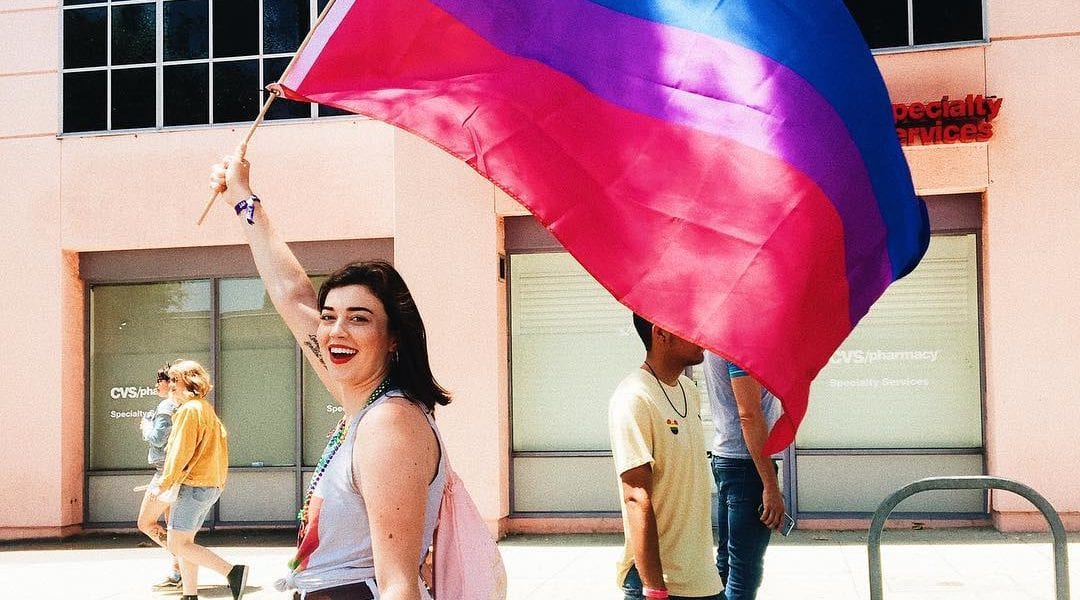In my own short, insignificant life, I have witnessed queer terminology evolve in strides. For the most part, this is a good thing. It promotes inclusivity and progress; changing minds comes with changing language. When I was younger, I watched the country debate over the constitutionality of “gay marriage.” As I became older and realized this term was an inherent part of myself, something I could not ignore, I watched the world change its mind over and over again. Now, “gay marriage” is referred to as “same-sex marriage,” which is far more inclusive, but presents its own set of problems. The terms we use create and shape our realities, especially when those realities live within the boundaries of emerging communities and movements, including the queer community. The evolution of language within and surrounding the queer community reflects the growth of the movement and societal progress altogether; yet, through reclaiming painful histories and attempting to foster inclusivity, the movement only creates more friction and separation with emerging terms when the goal is to promote the theory of a spectrum, rather than a string of confining definitions.
When I was fifteen, I didn’t know how to come to terms with my sexuality. It wasn’t talked about in my family or community; the default was straight. One day, though, I stumbled upon a text post on Tumblr outlining different sexual orientations, and by reading that post, I learned that I was pansexual, which means I’m attracted to all gender identities. This doesn’t mean that I wasn’t pansexual before I read that post, or that this realization came in an instant. Before then, though, I didn’t have a word for it. I had never heard the word pansexual before, so when I read the brief definition, I realized it described what I was feeling. Through this discovery, I was able to find a sense of pride and a community. So, while my reality of my sexual identity may have led me to this term, this term also created my reality in giving me a group of people I could identify with. In a lot of ways, though, having a letter can be both empowering and comforting, which is part of why I decided to identify as bisexual, which means to be attracted to more than one gender.

The differences between bisexuality and pansexuality are nuanced and complicated, but one person could technically identify as both. Just like a square is a rectangle but a rectangle is not a square, a pansexual person is technically bisexual, but a bisexual person is not necessarily pansexual. Being bisexual rather than pansexual, however, gives you a higher place on the spectrum, right next to the all-powerful “G” in “LGBTQ.” You get a color on the flag, your own set of stereotypes, which can be oddly comforting. At times, knowing that your identity has stereotypes you can align with or choose not to conform to (such as cuffed jeans, the bisexual bob haircut, jogger sweatpants, artsy major) can affirm your identity, or at least confirm that it is real and valid.
The group to elevate the queer community began with, for the most part, gay men, and for some time, “gay” (and, then, “lesbian”) was the sole term used. Queer vocabulary then expanded, as all definitions and movements do, and we came to one of the most well-known acronyms of our time: “LGBT.” From there, letters were stacked on as they came. First, came the “Q” for queer, then the “I” for intersex, and “A” for asexual. Eventually, though there were too many letters to fit into one acronym, so a mere plus symbol was used to solve this problem. In a New York Times article on “The ABCs of LGBTQIA+,” Michael Gold wrote of his own experience with these terms, “These letters were an evolution toward inclusion—an expansion of the language used to represent a disparate group that had often just been called “the gay community.”” However, it isn’t always that simple.
The problem with these letters is that they limit identities to those that can fit in boxes, and the queer movement is innately opposed to boxes. Queer rhetoric is defined as “self-conscious and critical engagement with normative discourses of sexuality in the public sphere that exposes their naturalization and torques them to create different or counter-discourses, giving voice and agency to multiple and complex sexual experiences,” and deals mostly with the decompartmentalization of terms and ideas. By “queering” theories and terms, we can analyze them through a nonlinear lens, which is especially effective when critically engaging with queer ideology and terminology. In doing so, we bring to light the suppressed tendencies and traits of human interaction, allowing for nontraditional, non-normative readings. This is, by definition, an act of deconstruction, which may seem counterintuitive when approaching a concept that seems to be “queering” (applying this theory as a deconstructive tool) at its core. And, while the queer community may be “queering” heteronormative language by creating more definitions of sexuality and gender, it is still trapped by the confines of patriarchal structures cemented long before its creation.
The separation of binaries functions in favor of patriarchal structures. Binaries inherently create hierarchies, of better and worse. The binary of gender, of men and women, serves the purpose of enforcing the idea that men are better than women, which is only possible if they are seen as distinguishable. The binary of gender, where men marry women and women marry men, has always harmed the queer community. This binary is why it took so long to accomplish same-sex marriage and is why, even today in the progressive year of 2018, the queer community cannot escape this heteronormative, culturally-embedded binary. Because this binary norm has impeded queer equality progress, one might think the queer movement would naturally disavow that binary in favor of something more inclusive, but they did not. Instead, the queer community embraced the use of binaries in order to fit into the patriarchal structure forcing it to conform.
One obstacle the queer community faces is condensing the movement to be normal enough for it to be digestible by straight people, which is necessary because non-binary structures that do not adhere to the order of a patriarchal society cannot feasibly succeed. Part of this condensation is fitting the queer community into boxes, thereby compartmentalizing the entirety of a broad, nuanced movement. This would make sense in a heteronormative structure, but for the queer movement, founded on the idea of complexity in sexuality and the idea that gender and sexuality live on a spectrum, it directly contradicts its goal. At first, there were only two boxes, then four, and so on, until, eventually, we ended up with more terms and boxes than we could fit into an abbreviation that needed its own glossary. At this point, there is an exponentially larger amount of terms in the queer vocabulary, which only further proves the notion that both gender and sexuality are spectrums, which cannot be confined to a definition.
“Queer” has been the term used as a catch-all for anyone who identifies as anything other than someone who is cis (“someone whose gender identity matches the sex they were assigned at birth”) and straight. While some find it empowering as the reclamation of a word that was used to marginalize and degrade queer folk, some find it offensive and too reminiscent of painful histories. These semi-recent painful histories attribute to the apparent age gap in those who accept and embrace the word “queer” and those who reject it. Younger people seem to be taking to the word much more swiftly than older queer folk, which might be because the queer vocabulary is already constantly fluctuating and evolving, whereas queer terminology was seemingly set in stone when the movement first took off in the 80s. In a Dazed article entitled, “Tracing the History of the Word ‘Queer,’” Jake Hall describes this gap stating, “Modern youth have grown up in a more accepting society that celebrates inclusivity and views ‘queer’ as a useful umbrella term to describe all non-binary identities, whereas an older generation came of age in a society which saw the term only as a slur.” Though the word “queer” may be on the right track in terms of creating an intersectional term that lacks as strict of a definition as other, more specific terms, it still instills a new binary–of queer and not. This idea further embeds the idea of straight, cis people being the norm, whereas queer folk are abnormal, even more so fitting into the heteronormative, patriarchal binary.
Another instance of progressing language that cannot entirely be free of the binary it was borne of is the use of “same-sex marriage.” When same-sex marriage was a new conversation and states were debating its constitutionality or lack thereof, it was solely referred to as “gay marriage.” Now, though, it has been coined as “same-sex marriage.” The development of this term comes from the idea that not all same-sex couples are gay or lesbian, and that queer couples, like every identity scattered across the queer spectrum, are just as nuanced and complex. Another reason could be because the term “gay marriage” carries so much painful history. Through the entire fight of same-sex marriage, and beforehand, it was referred to as “gay marriage.”
With a new term, may come a better, brighter future. In a ThoughtCo. piece on the difference in titles, Tom Head described his stance writing, “There has been so much hostility directed against same-sex marriage under the terminology of “gay marriage” that the phrase almost sounds like a pejorative now. The more accurate terminology of same-sex marriage has a less painful history.” So, instead of making it an issue of sexual identity, they made it an issue of gender identity. However, by using the word “sex” instead of “gender,” these laws of same-sex marriage and queer equality reflect the patriarchal structure that insists biological sex is the same as gender, which is not the case. So, once again, even when trying to be more inclusive, the movement still could not abandon the patriarchal structures that bind it.
The future of queer language is moving toward a more intersectional, all-inclusive glossary. With perpetually emerging terms, more and more people are denying those binaries entirely. Recently, Janelle Monae, an American pop singer, and icon came out, of sorts, in an interview with Rolling Stone, saying, “Being a queer black woman in America… someone who has been in relationships with both men and women – I consider myself to be a free-ass motherfucker.” Monae is just one of many who identify with what they feel more than the words that describe it. More and more people are accepting non-straight, -cis identities without adhering to a singular term, which goes directly against patriarchal, binary systems.

Because of the hierarchies inherent in the creation of binaries, people of different gender or sexual orientation will never be truly equal until that system is dismantled. Therefore, by veering toward free expression and individual definition, which differ and fluctuate from person to person, we find ourselves arriving closer to a more equal society, which both creates and reflects reality. Figures like Monae are rhetorical activists in this vein, deconstructing terms and redefining them. In Claire Hayward’s work, “Queer Terminology: LGBTQ Histories and the Semantics of Sexuality,” she outlines the evolution of terms as they relate to history, and says that this progression has “showed that terminology has the ability to empower historians and consumers of history; whether to claim (or reclaim) a past on one’s own terms, or to accurately represent an often marginalized history, our choices of terminology are personal and political.” For this reason, it is crucial that we attack and reconstruct the terms we use, especially within the realm of social activism.
Ultimately, the evolution of queer language reflects the expansion of the movement and cultural growth; yet, through this reclamation of harmful terms and the effort for inclusive terms, the movement often instills more separation and distinction when the goal is ultimately to eliminate inhibiting terms and binaries completely. Though the boxes and emerging definitions may be implemented in hopes of molding a more accepting, inclusive society, they, create more confines than new openings. The increasing amount of terms used in the queer community signifies that it is growing and seeing progress, yet it contradicts the purpose of the movement itself. Rhetorical activists like Janelle Monae and the increasing amount of young people coming out and exploring their sexual and gender identities will be the figurehead of this movement for deconstruction, but if we cannot abandon binaries entirely, we will never be free from the hierarchies created by the patriarchal structures, and thereby histories, that birthed them.
Like this post? View similar content here: Rainbow Warrior – A Song, A Video And An Ideology






